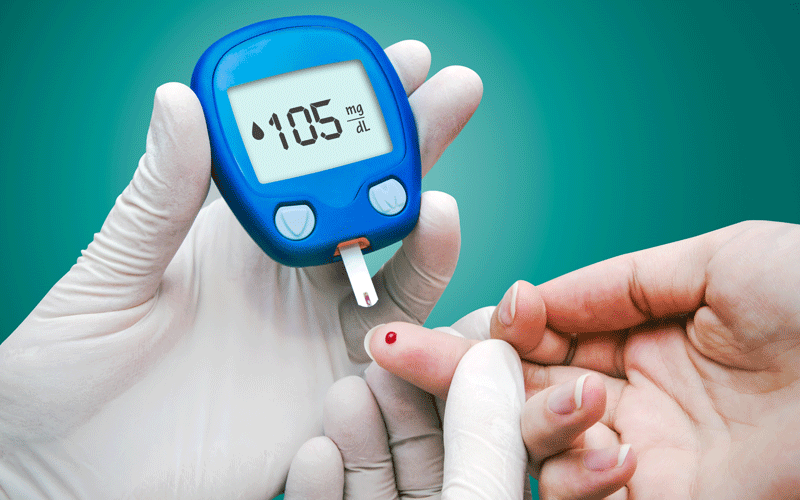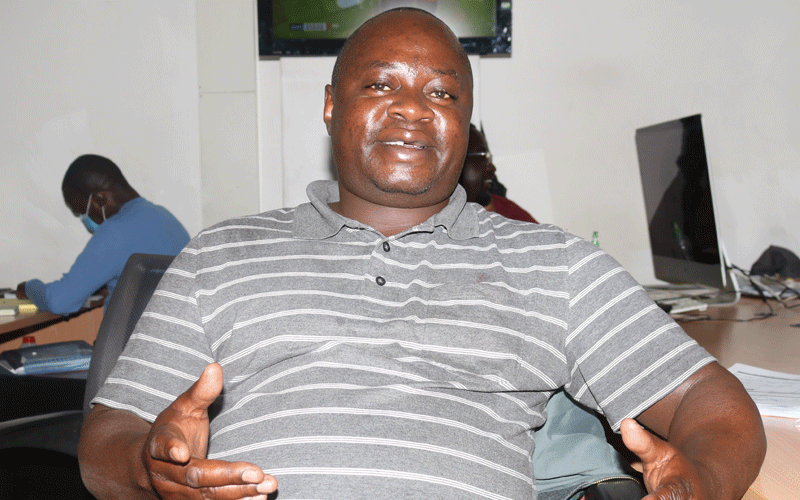Diabetic patients call for cheaper gadgets
By Joseph Maina, November 16, 2020As tech becomes more streamlined in addressing this non-communicable disease, experts call for awareness on them and affordability as well.
Joseph Maina @MwangiMaina8
Benard Orwongo could tell something wasn’t quite right in his body. As he drove from Nairobi to Nanyuki on assignment one morning in 2017, he felt a peculiar lethargy. His normally good eyesight had weakened significantly.
“I was feeling funny,” says Benard. “I could barely see 50 metres ahead of me. I thought I was exhausted.”
Being a photographer with the People Daily, his sharp eyesight had always been his stock in trade.
Now it had weakened, and this perplexed him. In addition to loss of vision, he was awfully parched on this day, and felt a strange partiality for cold drinks.
As the day wore on, he chugged away five big cold sodas and still felt he could take some more.
“I guzzled water too, in copious amounts. Despite all this, it never struck my mind that I had an underlying illness,” he explains.
He struggled through his assignment and later that day made the journey back to Nairobi. He was back at the wheel, but couldn’t see beyond 100m due to blurry vision.
The following day, as he took his child for check-up at a family doctor’s, he asked for a blood test. The results confirmed it – he had Type II Diabetes.
“The nurse took a look at the results and screamed,” Bernard recalls. “My blood sugar had spiked to 34.
Normal quantities should be less than 10. I was admitted immediately,” he remembers.
He spent nine hours in special care, during which he was administered with water and insulin.
The medics succeeded in lowering his blood sugar to 14, and released him at 3am.
And thus, Benard had set off on the delicate journey of managing his condition.

He was placed on medication, which included glucomen, and periodic hospital visits to check on his condition. He also had to regulate his diet, which meant limiting his starch intake.
“With my type of diabetes, I can manage it with the proper diet and some exercise.
I only took medicine for the first three months, before my condition stabilised.”
Save for one instance when his blood sugar spiked, which was at the height of a bumpy domestic episode, the going has been good so far.
He is aware that palpitations of stress can affect blood sugar levels, and so he tries his best to maintain a calm temperament.
He checks his condition using a glucometre, a medical device for determining the approximate concentration of glucose in the blood.
The glucometer comes with 50 strips on initial purchase, and cost Orwongo Sh4,500.
However, he quickly went through them when his blood sugar was high, as he needed to keep checking the levels after every hour.
As they are designed, they are not reusable, meaning he had to look for options once he saw their reduced number.
“When my sugar levels are stabilised, I use two strips a day. The big problem is some of these strips are not easily available, and when they are available, they are not affordable,” he adds.
He was forced to turn online for these vital tools, and stumbled a set of 25 selling at Sh1,400. He also found out that subsequent purchase of the same strips cost him Sh1,000.
“Once I ran out of these strips and I was forced to move from one pharmacy to another at different times of day to check my blood sugar. It cost me at least Sh500 a day,” he laments.
November 14 is World Diabetes Day, an event that calls for stakeholders to promote the importance of taking coordinated and concerted actions to confront diabetes as a critical global health issue.
The International Diabetes Federation Diabetes (IDF) as of 2019 places the number of people aged 20-79 with diabetes worldwide at 463 million people, and predicts that the number will increase to 700m by 2045. It caused 4.2 million deaths in 2019.
In Kenya, the prevalence of diabetes of people aged 20-79 is 3.1 per cent, with deaths at 8,000 in 2019, a drop from 13,000 in 2010.
Against such statistics, experts call for urge for greater awareness creation among the public on the best ways to manage diabetes to avert further complications.
“We need to educate people without ceasing,” Betty Okere told People Daily. “That’s because when people do not have the right information, they end up trying all manner of things, which could lead to further complications.”
Okere is a diabetes educator and nutritionist. She explains that technology now helps in diabetes management.
There exist several handy gadgets and interventions that have provided easier and more effective ways of managing diabetic patients.
For instance, thanks to technology, doctors are equipped with tools that help with remote monitoring of diabetes patients.
Enter telemedicine
“We’re now moving to telemedicine, ideally. Chronic conditions, which include diabetes, can actually be managed remotely, so long as the patient knows what to do and shows that he or she can do it correctly.
Chronic management is basically self-care management by the patient,” she says.
Covid-19 has particularly exacerbated this aspect of diabetes management, Okere said.
A World Health Organisation survey in March covering 155 countries showed that the pandemic disrupted prevention and treatment services for noncommunicable diseases, including diabetes, with low income countries the most affected.
It was particularly worse when some patients showed fear of visiting the hospital during the peak of the pandemic, especially with reports that people living with diabetes are more at risk of contracting Covid-19.
“Most people fear going to hospital now. They fear exposing themselves. Previously we were not going big on telemedicine, but with Covid-19, we had to go that way,” she explains.
Various gadgets exist to assist with checking sugar levels, assessing the intake of carbohydrates, and for strategic management of the condition by remote caregivers.
There are Continuous Glucose Monitoring Systems (CGMs), which come equipped with sensors to record blood sugar on a real time basis.
“Some of these gadgets even have Bluetooth, so that a person with diabetes can connect to various machines.
In this way, it can link to the doctor, teacher, parent or any other party, and alert them that the patient is in trouble,” she adds.
And when the first person does not respond, the system alerts the next person, and so on, until somebody attends to the patient.
The insulin pump is a convenient tool particularly for patients who feel disoriented by insulin injections.
The pump, which is the size of a pager, is a handy tool that helps determine the quantities of insulin intake a patient needs, and helps regulate the intake.
Local innovations
A lot of the gadgets are imports, developed in other catchment areas with different sample populations.
This, Okere says, ought to change. Stakeholders including the government should empower local innovators and ICT specialists to develop homegrown solutions to diabetes management, using local sample populations.
This will help “Kenyanise” the technology, for more effective management of the local diabetes patient.
The downside of these technological innovations is cost. A good number of the gadgets and consummables are out of reach to lower income segment.
“When the pumps first landed here, they were going for as high as Sh2 million. To buy the pump is a one-time investment, but then you need the consumables, which previously were quite expensive.
Nowadays, with about half a million, one can get a pump, while the consumables would cost Sh100,000-Sh150,000,” explains Okere.
She urges people to not stigmatise diabetic patients. Teachers, for instance, may find it strange for a child to dose off in class, but they must be cautious to understand the reason behind such behaviour.
Society should also not disparage overweight people, unaware of the underlying causes.
For Orwongo, the availability and affordability of some of these gadgets, especially the free-prick ones will go a long way to help patients, especially those in the rural areas.
“If we could get something like a thermometer to test your blood sugar, many people would be on board.
Pills are affordable, and they help. But a gadget that does not cause discomfort or pain would be ideal,” he says in conclusion.
